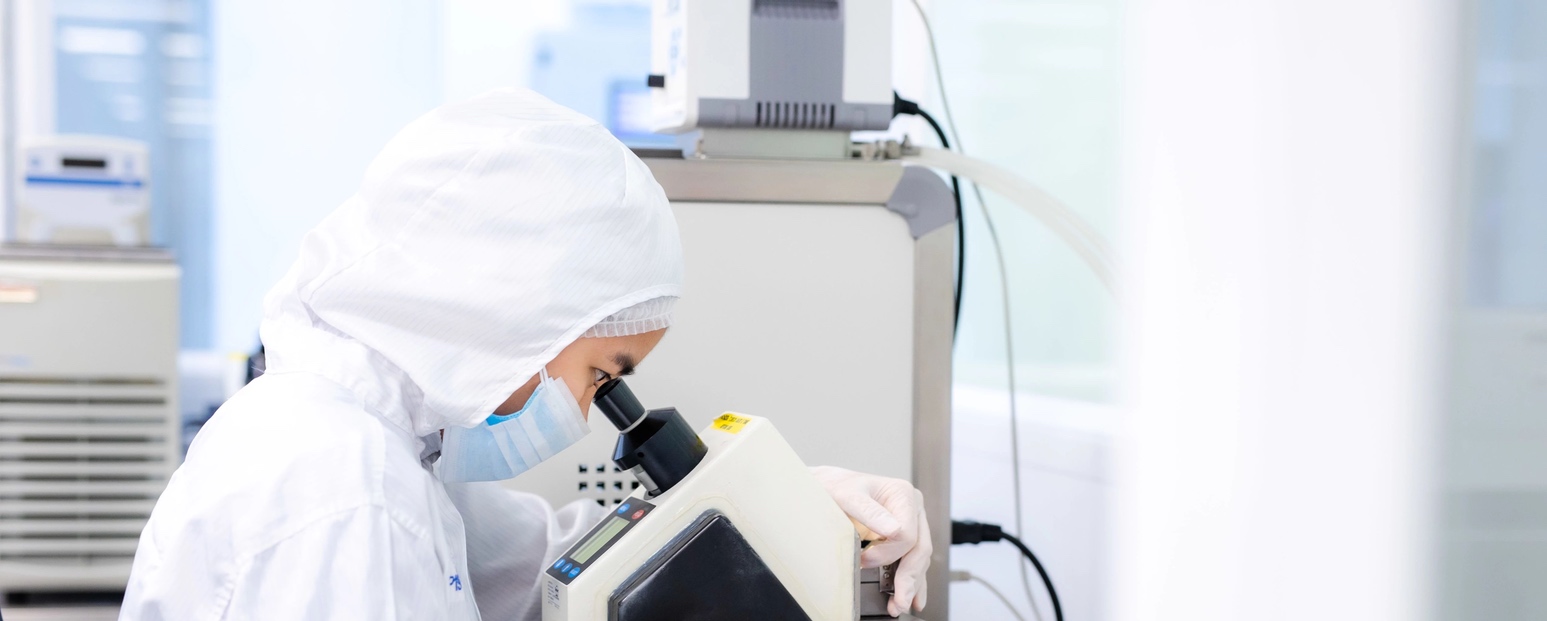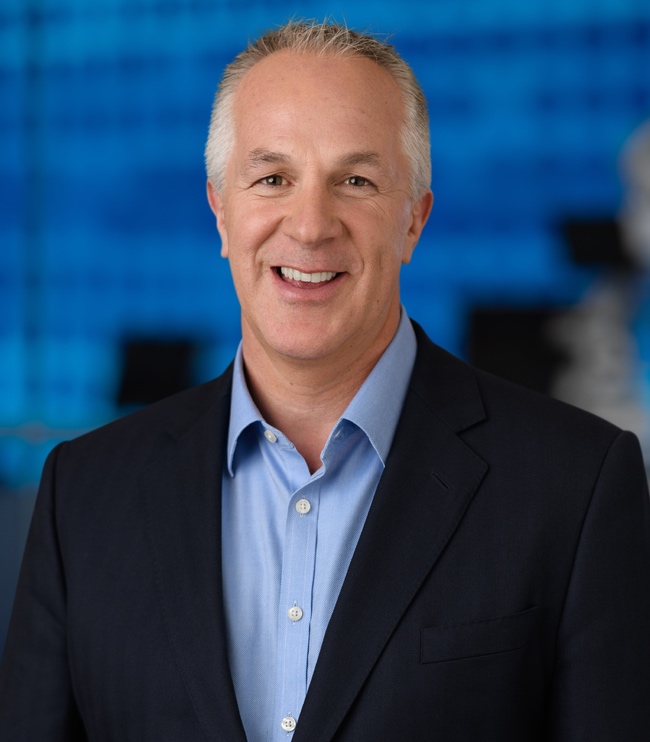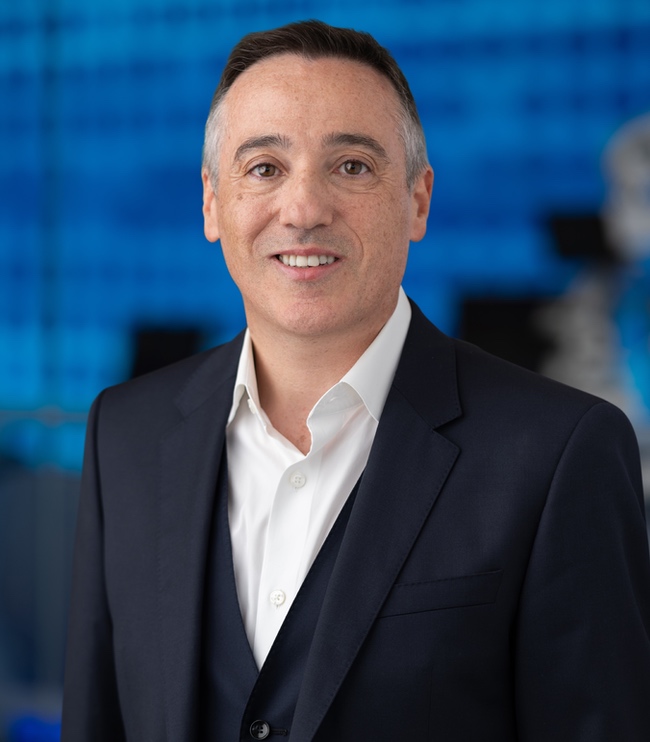Who are the leaders galvanizing our innovation and research and development (R&D) mission? We sat down with
Ian Bell, President Global Business & Innovation (GB&I), and Franck Leveiller, Chief
Science Officer and Senior Vice President, Head Global R&D, for a conversation on how Alcon is advancing
products with purpose in the eye care industry.
How would you describe your innovation philosophy? How has that influenced Alcon’s go-to-market
strategy?
Ian: Deep-rooted customer insight is where it all starts. We glean these insights from patient
behaviors, challenges and successes shared by Eye Care Professionals (ECPs) – surgeons, ophthalmologists and
optometrists – and what they’re seeing in their practices in real time. Whether an ECP is helping their patient decide
on a contact lens, treating their dry eye or addressing their cataracts through surgery, our goal is to shadow our
customers to deliver meaningful solutions that meet those needs, which is where Franck’s team comes in.
Franck: To add, we’re agnostic to where innovation comes from. As a leader in ophthalmology, we take
every opportunity to collaborate with key industry players to review and assess our solutions so that we can deliver
the strongest impact with our customers at every touchpoint. I often quote my predecessor, Mr. Connor, one of the
founders of Alcon, who used to say, “We see the needs of the patients through the eyes of the specialists who are
treating them.”
Can you talk about the current customer needs you’re seeing and the role that Alcon plays in addressing them?
Ian: Of course. The rapidly aging global population is an imminent challenge. We’re seeing an
increase in the prevalence of serious eye diseases like presbyopia, glaucoma and cataracts.1-3 Meanwhile,
there’s a global shortage of trained Eye Care Professionals. The rate of ophthalmologists completing their training
and coming into the field is lower than the rate of those that are retiring.4 Finally, customer
expectations for great outcomes continue to rise. People want more from their healthcare dollars. They want more
value. They want more efficiency. Ultimately, this means our solutions must enable ECPs to do more with fewer people.
Franck: The good news? These challenges can also be thought of as opportunities. If we look at the
bigger picture, 90% of vision loss can be prevented or treated. Alcon is uniquely positioned to meet this demand, as
we’re the only company focused solely on eye care in comparison to our competitors. We have 75 years of deep knowledge
of the sector, which sets us up to pave the way for long-term change.
How do customer needs vary among markets and how does Alcon tailor its innovation approach as a result?
Franck: An eye that’s suffering from, say, a cataract, is similar across every market. But sometimes
the environment in which they exist is different. It’s also important that we drive inclusivity for our customers.
We’re developing a smaller handle for one of our surgical instruments so that it’s more adaptive for surgeons who have
smaller hands.
Ian: Affordability in some markets is also lower, so we are also exploring how we could create
best-in-class technology at a lower price point.
Franck: Beyond the existing solutions themselves, we’re investing in research surrounding the
prevalence of myopia progression in Asian markets, so we can identify treatments that are stronger than what is
currently available for this patient demographic.
What other tactics is Alcon employing across its R&D labs at the moment?
Franck: We’re constantly trying to bring innovation faster, and more affordably, to customers. We
recently launched an initiative focused on how Alcon R&D can become best-in-class in our field. One of the innovation
pillars is digitalization. That means leveraging technologies to do more digital prototyping and get all our data in a
digital format so it can be analyzed more efficiently.
Ian: Digitalization can ultimately allow us to drive greater innovation for the same investment.
Right now, we have a rich pipeline of more than 110 projects in R&D. Not all of those will come to fruition, but we
want to get as much as we can from each of those projects by investing in them appropriately. That’s critical to our
long-term success.
Franck: Within these projects, we have a very balanced distribution between disruptive and
incremental innovation. We need incremental because once we launch a product, we continuously improve it to make it
the best-performing product. That additive approach to innovation is core to Alcon’s ethos as an organization and to
the medical device innovation field writ large, especially when compared to pharma, which is mainly disruptive. That
said, we also invest part of our budget in more disruptive innovation, which focuses on projects that will transform
the way that we practice ophthalmology.
Can you expand what this disruptive innovation will look like and where you see the industry heading over the
next 3-5 years?
Franck: We see opportunities with continuing to bring next-generation advanced intraocular lenses to
market that will provide full-range vision at any distance with the same level of visual disturbances as the natural
lens, offering more IOL options to our patients. We also know that digitalization is transforming the healthcare
sector in general by creating efficiencies and improving clinical outcomes, so we invest heavily in this space. We’re
creating the next generation of equipment in every domain, from diagnostics to refractive, cataract, intravitreal
retinal and glaucoma surgery, to name a few.
Ian: As we reenter the pharma space, we’re fortunate enough to have acquired a team from Aerie
Pharmaceuticals that’s not only launching transformative products, but also has a strong R&D engine. We’re so excited
by the talent of this team and the programs they’re working on.
How do you ultimately get everyone singing from the same songbook to bring innovation to market?
Ian: It’s all about balance. Every year, we have more ideas for innovation than we can actually
afford, and we have to draw a line on the page where some of the ideas move forward and some don’t. That means we’re
discerning and prioritizing, and that’s how it should be. And just because an idea falls below the line one year
doesn’t necessarily mean we won’t come back to it another year. But we need this balance between taking customer
insights into account and then being decisive, clear and realistic about what we’re implementing going forward. It’s
easy to get excited about a clever idea, but it also must be practical in its application. It might be a good idea
based on one set of criteria, such as cost or efficiency, but not in totality.
Franck: I also think that’s where our purpose as a company comes into play. We’re all united by our
commitment to helping people see brilliantly across the world. It’s the DNA of our company and it genuinely resonates
with our colleagues across all markets. While it’s impossible for the entire organization to see eye to eye on every
single project, we’re aligned on the bigger picture. That keeps us grounded and ultimately drives stronger
collaboration as we pursue innovation.
References
- Presbyopia Epidemiology Forecast to 2030 - Focus on United States, Japan, Germany, Italy, France, United Kingdom,
and Spain - ResearchAndMarkets.com. Business Wire. Published online April 7, 2021. Accessed July 5, 2023. [Link]
- Friedman DS, Wolfs RCW, O’Colmain BJ. Prevalence of open-angle glaucoma among adults in the United States.
Archives of ophthalmology (Chicago, Ill. : 1960). April 2004. Accessed July 5, 2023. [Link]
- Shu Y, Shao Y, Zhou Q. Changing trends in the disease burden of cataract and forecasted trends in China and globally from 1990 to 2030. National Institute of Health. May 1, 2023. Accessed July 5, 2023. [Link]
- Terveen DC. Ophthalmology numbers cause for concern. AAO.org. August 19, 2022. Accessed July 5, 2023. [Link]
- Treatable or preventable vision loss. The International Agency for the Prevention of Blindness. February 24,
2021. Accessed July 5, 2023. [Link]
GLB-CAT-2300008




